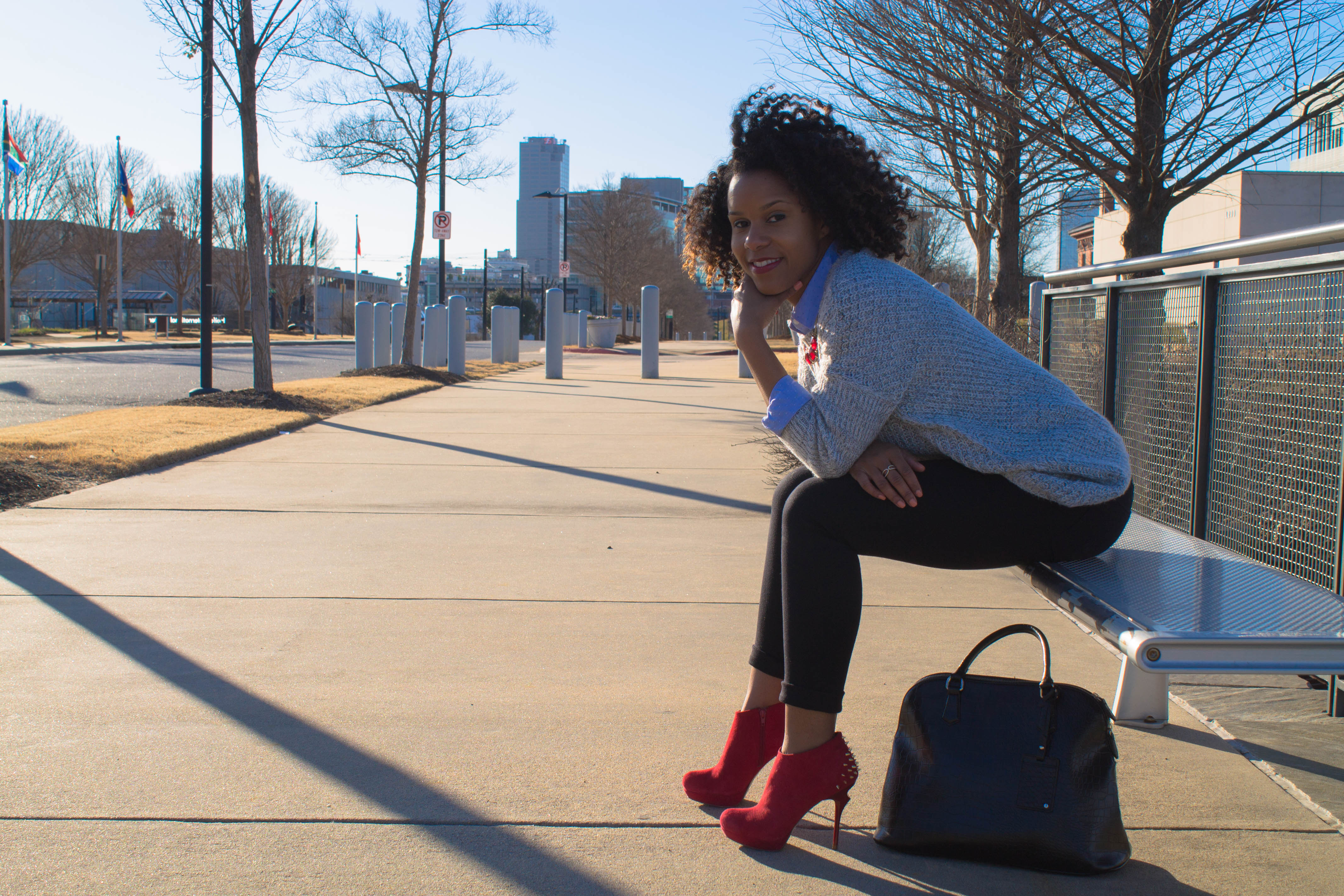Why should you deep condition and is it really important??? Deep conditioning your hair has many benefits, the most prominent being to repair damaged cuticles and to assist with moisture retention. So here is another question to consider…if deep conditioning “supposedly” helps you to repair your hair and retain moisture, why is it that some naturals have difficulty seeing positive results afterward???
First, let’s explore how conditioners (in general) interact with hair…

As we travel down memory lane to 8th grade science, do you recall learning about negative and positive charges???? If not, it’s cool, I will gladly refresh your memory! It is simple… unlike charges (-/+, +/-) attract each other and like charges (-/-, +/+) repel each other. Hair has a net negative charge and conditioner has a positive charge. When conditioner is applied to the hair, it adsorbs (or adheres) onto the cuticle layer, this allows for temporary repair by filling in gaps to reduce friction and adds softness and flexibility to hair. The difference between regular conditioners and deep conditioners, is that deep conditioners have ingredients that are able to penetrate deeper into the hair shaft; their purpose is to provide moisture and nutrients to the cortex and not just coat the cuticle layer.
All hair textures benefit from deep conditioners, but there are factors that may effect how well they work. Here are a few you should consider prior to deep conditioning your hair…
Porosity:
The porosity of your hair is one of the most important components to consider when using hair care products. Porosity refers to how well your hair absorbs and retains moisture. If you are unsure of your hair’s porosity, check out this post here to learn more. Porosity is identified by high, medium, and low. For the purpose of this post, I will discuss high porosity and low porosity only. If your hair is very porous (high porosity), the cuticle layer is constantly raised allowing your hair to absorb moisture easily and lose moisture quickly. If your hair is not very porous (low porosity), the cuticle layer is tightly closed, preventing moisture from entering. In both of these cases, moisture retention can be difficult to attain.
Health of your Hair:
The overall health of your hair plays a big role in choosing the correct deep conditioner. External factors such as high manipulative styles, sun exposure, permanent hair color, and excessive blow drying/flat ironing can cause damage to your hair. With prolonged exposure, these factors will cause your strands to become more porous. It is important that you choose a deep conditioner based on the specific needs of your hair. Most deep conditioning products list what factors they are designed to correct or prevent.
Type of Deep Conditioners:
Not all deep conditioners are created equal. Pay close attention to the ingredients listed, you will want to select a product that has 2 major purposes: (1) provides specifically what your hair needs and (2) has the ability to penetrate the hair shaft. The first 5 ingredients are said to be the main ingredients that make up the product. Also be aware that some ingredients work best with applied heat. I know, it requires a little research but it will be worth it knowing that what you’re putting in your hair actually works.
How the product is applied:
Based on the porosity of your hair, how you apply deep conditioner to your hair is crucial to how well it works for you. If you have low porosity hair, the cuticle layer is closed, so you will need to raise the cuticles to allow moisture/products to enter into the hair shaft… How do you do that???? HEAT!!! Yes, you read correctly, applying heat non-invasively (i.e. warm water) will raise the cuticle layer and allow the ingredients from your deep conditioner to enter the hair shaft and penetrate the cortex layer. Heat can also be used after application via hood dryer, steamer or a towel warmed from the dryer, to further assist with the absorption of the product. If you have high porosity hair, the main focus is to ensure that the moisture that has been absorbed is retained and not lost. In your case, you will rinse out the deep conditioner with cool water to close the cuticle layer.

Tips for Deep Conditioning:
1. Section and detangle hair thoroughly… This will help prevent knots and tangles.
2. Start with freshly washed hair… This allows the deep conditioner to have the best contact with your hair for maximum results. Be sure to squeeze excess moisture to prevent dilution of the product.
3. Apply deep conditioner to sectioned hair… Be sure to thoroughly saturate your hair to ensure that every strand is covered, work it through with your fingers and pay special attention to your ends.
4. Leave in for the allotted time suggested by product instructions… There is a reason why there is a specific time frame, leaving in your deep conditioner for longer than the specified time does not increase nor improve the products absorption.
5. Rinse with cool water to close the cuticle layer.
Do you deep condition your hair and what is your favorite deep conditioner?
Thank you for stopping by… Please feel free to leave a comment below!!!!
XOXO
Tamara







One comment
A. Orange
Yep I deep condition! I’m currently using Cream of Nature products, and I deep condition my hair at least once a month. Sometimes every 2 weeks if it’s feeling dry or brittle, which sometimes happens when the weather gets really cold. I sit under a hooded dryer about 20 minutes.